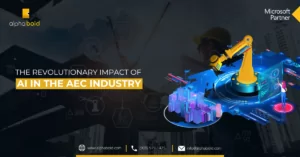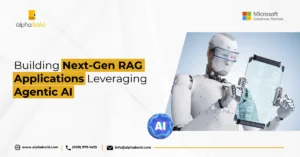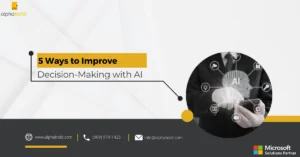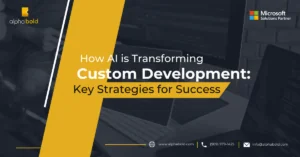Using Generative AI for Machine Learning: A Ticket Prioritization Example

Awais Aslam
Introduction
Studies show that 61% of employees are either currently using or interested in using generative AI in the near future. This technology, particularly when integrated with machine learning, is already making significant strides in marketing and customer service. In fact, 68% of respondents believe generative AI will enhance customer service, while 67% think it will boost the value of investments in other technologies like machine learning and AI.
With the rise of Large Language Models (LLMs), many are exploring how generative AI can solve complex problems. Some use cases are groundbreaking, while others may feel more like passing trends. As a data scientist, I’ve been reflecting on how generative AI could further enhance machine learning processes. But before diving into those details, let’s take a step back for anyone new to the field to better understand the core concepts.
Gen AI vs. Machine Learning: What’s the Difference?
Generative AI and Machine Learning are distinct but complementary fields within the broader AI landscape. Machine learning focuses on teaching algorithms to learn from data—either supervised or unsupervised—and use that learning to predict outcomes. The core strength of machine learning lies in its ability to improve over time as it processes more data, refining its predictions.
Generative AI, on the other hand, is exemplified by LLMs, which are trained on vast datasets to generate new content. Unlike traditional machine learning, re-training these models on new data is resource-intensive, both in terms of time and cost.
This raises an important question: how can we combine the predictive power of machine learning with the generative capabilities of AI models like LLMs to enhance overall outcomes? Exploring this synergy could unlock new efficiencies and lead to even better results across both domains.
Using Generative AI for Machine Learning
In machine learning, feature selection is a critical step. It involves removing irrelevant or redundant data, which helps algorithms make more accurate predictions. For example, when predicting the price of a home, important features might include the number of rooms, total area, and proximity to the beach.
Data scientists often use feature engineering to create new features to improve predictions even further. For instance, you could calculate “cost per square foot” as a new feature to provide additional insights. When working with time series data, libraries like TSFresh are particularly useful for engineering numerical features.
But what about working with textual data? This is where LLMs and embeddings come into play. These advanced tools help transform text into meaningful representations, enabling machine learning models to extract and utilize key insights from large volumes of unstructured text data.
Example: Harnessing LLMs for Advanced Textual Feature Engineering
Imagine working with a large dataset of Zillow home reviews, and your goal is to use these reviews to predict home prices. By leveraging LLM embeddings, you can transform the textual content of the reviews into numerical vectors that machine learning models can process. While we won’t delve into the technical aspects of vectorization today, the key takeaway is that LLM embeddings unlock the potential for textual data to contribute meaningfully to predictions.
Use Case: Ticket Prioritization with Text Embeddings
Prioritizing Support Tickets with Embeddings: Step-by-Step Guide
Here is how embeddings can be applied to prioritize customer support tickets based on textual data. (This is a simplified example, not an actual project.)
Step 1: Generating Dummy Ticket Data
The first step is to clean the ticket data by removing any unnecessary noise from the text.
“`python
import pandas as pd
import re
from sklearn.feature_extraction.text import ENGLISH_STOP_WORDS
# Sample dataset of support tickets
data = {
‘ticket_id’: [101, 102, 103, 104],
‘description’: [
‘Server is down, critical issue needs immediate attention!’,
‘Password reset request for new user.’,
‘High latency on our website causing customer complaints.’,
‘Minor issue with email notifications, not urgent.’
],
‘priority’: [1, 3, 2, 4] # 1 is highest priority, 4 is lowest
}
df = pd.DataFrame(data)
Step 3: Training a Model to Predict Ticket Priority
“`python
from sklearn.model_selection import train_test_split
from sklearn.ensemble import RandomForestClassifier
X = list(df[’embedding’].values)
y = df[‘priority’]
X_train, X_test, y_train, y_test = train_test_split(X, y, test_size=0.2, random_state=42)
model = RandomForestClassifier()
model.fit(X_train, y_train)
# Predict the priority of new tickets
y_pred = model.predict(X_test)
“`
Step 4: Automating Ticket Prioritization with AI
Tired of Overwhelming Ticket Backlogs?
Are the overwhelming number of tickets impacting your team's morale and customer satisfaction? Let's talk about how Generative AI can be your solution. Request a free consultation with our experts and explore your options.
Request a ConsultationThe Importance of Expert Consultation in Generative AI for Machine Learning
Although Generative AI has many useful applications, it is not an all-inclusive solution. Consultation with subject-matter experts, like AI consultants at AlphaBOLD, is mandatory to guarantee a smooth deployment. Here are a few explanations for this:
1. High Quality Data:
If you want your forecasts to be spot on, you need high-quality data. Professionals can assist you in evaluating your data and spotting possible problems.
2. Selecting a Good ML Model:
3. Ethical Considerations:
4. Ethical Considerations:
5. Technical Expertise:
Explore the key considerations for selecting a tech partner for AI projects: Selecting a Tech Partner for AI Project.
Curious About the Potential of Generative AI for your Business?
oin the growing number of businesses that have successfully leveraged Generative AI to improve their operations. Hop on a personalized consultation call with us to explore how this technology can solve your specific challenges.
Request a ConsultationConclusion: The Power of Text Embeddings
Text embeddings offer data scientists and businesses a powerful tool for transforming unstructured text into meaningful, actionable data. By enriching textual information for machine learning algorithms, embeddings enable more accurate, context-aware predictions. While this blog used ticket prioritization as an example, the applications extend far beyond—ranging from sentiment analysis to product recommendations and customer behavior predictions. As businesses continue to explore the capabilities of Generative AI and machine learning, text embeddings can play a pivotal role in driving innovation and improving decision-making processes. Ready to harness the power of Generative AI for your business? Let’s work together to uncover the possibilities. Request a consultation today and discover how AI can transform your operations.
Explore Recent Blog Posts








